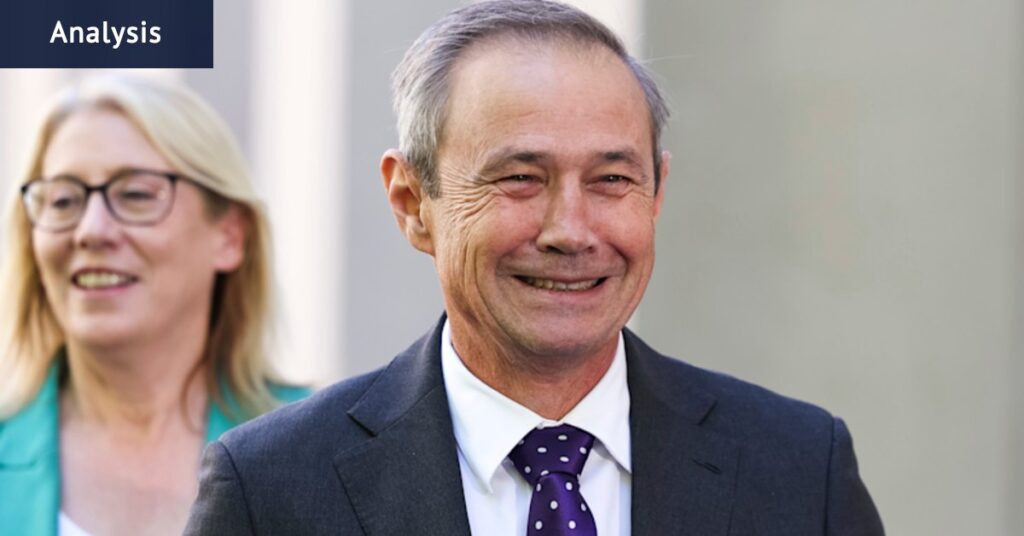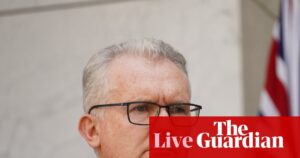
When Oliver Twist famously asked for more, he was clad in rags. In stark contrast, Western Australia’s Premier Roger Cook and Treasurer Rita Saffioti appeared polished, as if fresh from Savile Row, when they approached Canberra on Wednesday, seeking a larger slice of the Goods and Services Tax (GST) pie. Their campaign, “WA’s GST is working for Australia,” is as much about appeasing disgruntled voters across other states and territories as it is about securing support from their own constituents in Perth.
The root of this interstate discontent lies in a seven-year-old GST deal that has funneled billions into Western Australia but is projected to cost federal taxpayers approximately $60 billion by the decade’s end. Independent economist Saul Eslake, a proud Tasmanian, has labeled this agreement, orchestrated by Scott Morrison and Josh Frydenberg in 2018, as the worst public policy initiative of the century.
The Controversial GST Deal
The GST allocation system was initially reformed to address Western Australia’s dwindling share during a domestic recession. At one point, it seemed WA might not receive any GST revenue at all. The Productivity Commission recommended a per capita distribution of GST with additional support for financially struggling regions like Tasmania and the Northern Territory.
However, the Morrison government devised a two-part system. Under this arrangement, WA is guaranteed to receive 75 cents for every dollar of GST thought to be generated within the state. This fixed allocation necessitates compensatory payments to other states and territories to ensure they are not disadvantaged, a provision that now burdens federal taxpayers, including those in WA.
Political and Economic Implications
Both major political parties recognize the unsustainability of the current GST system. Premier Cook has emphasized that reverting to the pre-2018 system would cost WA $6 billion annually, potentially requiring federal intervention to maintain essential services and infrastructure. He also criticized the system’s complexity, noting that few understand the Commonwealth Grants Commission’s annual GST distribution process.
Cook argues that the system disincentivizes economic development within states and territories, although this claim lacks substantial evidence. “It’s a ridiculous system that disincentivizes state governments to develop their industries, and quite frankly, I think it needs an overhaul to ensure that we provide the right incentives,” he stated.
“It’s a ridiculous system that disincentivizes state governments to develop their industries, and quite frankly, I think it needs an overhaul to ensure that we provide the right incentives.”
Western Australia’s Economic Landscape
Western Australia’s economic prosperity is often attributed to the hard work of its residents and effective government management. However, the state’s wealth is largely due to its abundant natural resources, including iron ore, oil, gas, gold, lithium, nickel, copper, and zinc. The global demand for these resources, particularly from China, has driven extraordinary prices and economic growth.
Despite a budget surplus that could evoke envy from federal Treasurer Jim Chalmers, WA’s government faces challenges. It struggles to provide adequate health services, battles the country’s second-highest inflation rate, and has seen a significant cost overrun in its flagship Metronet rail project.
Future Prospects and National Impact
The state government has now allocated funds for a national advertising campaign to maintain the current GST system, which, if unchanged, will increasingly strain federal taxpayers, including Western Australians themselves. The campaign underscores the broader national debate over fiscal fairness and resource allocation.
As this issue unfolds, it raises critical questions about the balance of economic equity among Australia’s states and territories. The outcome could reshape the fiscal landscape and redefine the principles of federal financial relations in Australia.





